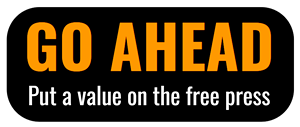Artist Mita Mahato is a surgeon, of sorts. With a scalpel and paper, she cuts to the heart of loss, defining emotions that words often fail to describe.
Mahato, 44, of Seattle, is part of a new wave of comic artists redefining the genre. She combines papermaking and poetry techniques to tell visual stories about things that don’t last forever: lives, identities, even species.
Her most recent work, “Lullaby,” published in the literary magazine Shenandoah, is about the plight of the disappearing Pacific Northwest orcas. She created the poem with newspaper clippings. Through images, it maps humankind’s undeniable role in the species’ slide toward extinction through river management and pollution. At the same time, it captures the mystery and beauty of a forsaken life form at our mercy.
Mahato, an associate professor of English at the University of Puget Sound, speaks next Thursday at the Jordan Schnitzer Museum of Art in Pullman. She talked to Inland 360 about her work.
360: Your work is reminiscent of the self-made zines of the ’90s. Was that era an inspiration for you as a comics artist?
Growing up in Milwaukee, Wis., my earliest introduction to comics was the Sunday funnies in the newspaper. I enjoyed reading them through most of my childhood and teen years. In college and grad school, I was introduced to Neil Gaiman and “The Sandman” and those kind of comics.
I came to independent comics in my mid- to late-20s. It was actually through Brian Fies’ book, “Mom’s Cancer.” My mom had cancer, and it was kind of through that book that I started discovering alternative, independent comics that related to autobiographical experiences not in the mainstream. That’s where I just felt really connected. That includes stuff like Harvey Pekar’s “Our Cancer Year,” written with his wife, Joyce Brabner.
When my mom passed away, I started making my own, coming out of this need to express what I was feeling.
360: You began making comics after attending a conference dedicated to comics and health care.
The Graphic Medicine Conference — I think when I went it was the second year it was going on. This summer is the 10th annual. I’m part of the steering committee now.
The conference invites academics, artists, health care providers — whoever from the community that finds interest in this. My first time there I said, “I have these stories, and I want to put them in comic form.” A couple attendees I was talking to at the time were just like, do it, and I was like, yeah, why not?
I’m self-trained. I’ve took a few classes here and there. I think that much of my training is coming from analyzing and reading the theories and finding application that way.
360: Do you think of your works like “Lullaby” as poetry?
I don’t know how yet poetry comics will be defined or formalized, but there’s something about the way I’m putting the images together that is linked to how I understand comics to work and how I understand poetry to work — without a straightforward narrative, with pauses and feelings.
360: Our region is the home to the orca’s food source, the salmon, and contains dams that have disrupted their populations and migration to and from the coast. It’s a controversial issue here.
It’s such a difficult issue. I’m hoping one of the things I get across is that all of us are so deeply entwined in this angle. So, pulling it apart, I’m not sure how to do it. I do know there’s no simple answer.
360: Why is it that so many of your works deal with loss?
This is the birth of my creativity coming out of my mom’s death. I just found a real resonance with a lot of issues that link up with loss. My work “Hitched” (made from old maps of states) is about loss of cultural identity. It’s about feeling in flux and constantly on the move, constantly trying to find some rootedness. “Patterns” (made of ’60s sewing patterns), that one is about breaking out of patterns that we cling to to identify our life, our past and our role as women and our role as men.
IF YOU GO
WHAT: Comics artist and poet Mita Mahato
WHEN: 3 p.m. Feb. 14
WHERE: Jordan Schnitzer Museum of Art, Washington State University, Pullman
COST: Free
OF NOTE: Mahato will talk about her work and answer questions. Her work is on display Feb. 12 through Feb. 16 in “Re-Kindle,” a pop-up exhibition at the museum. The display also features items from WSU’s Lynn R. Hansen Comics Archive, which includes 161 boxes of underground comics created between 1963 and 1978.

















